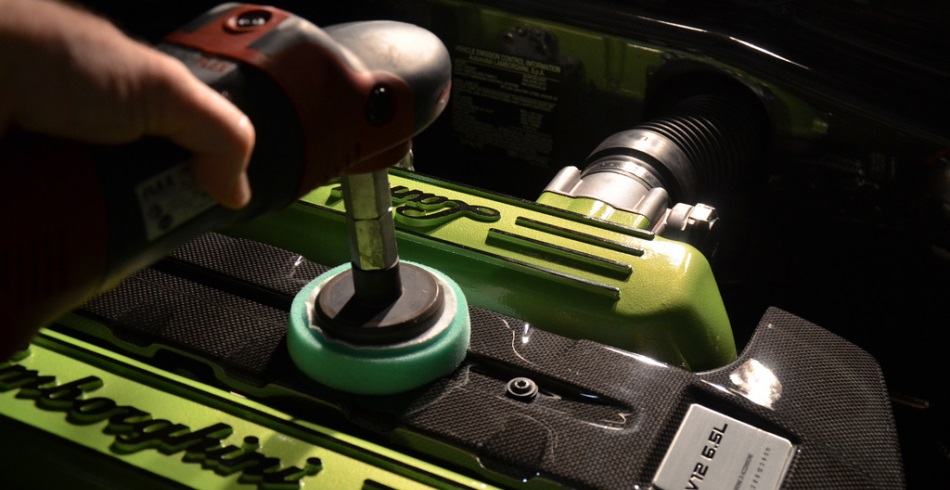Some of the most seductive vehicles in the world are extremely well crafted for aerodynamics and performance. Most commonly known as “Exotics.” In order for these cars to preform as they do, carbon fiber is introduced into the manufacturing process to save weight and add strength.
In professional auto detailing it is our job to know what is carbon fiber and what is not. Should we just pick up our tools and go at it like it was any old car? “No” Carbon fiber vehicles need to be handled differently during a professional paint correction process.
Over some of the many exotic vehicles I’ve done, first thing we need to know is what type of carbon like material we are dealing with. Is it painted carbon, raw carbon, carbon kevlar, raw kevlar, etc. Carbon fiber is still vastly improving to be lighter and stronger, however each have similar attributes while machine polishing. It is important to know how each material will react while machine polishing.
One of the most important tips when polishing on carbon/kevlar types of materials is the heat. Carbon/kevlar does not disperse heat as fast as metal or aluminum. The material will hold the heat in and will need a few moments to cool back down before another pass. Carbon itself is very tolerant to heat and high temperatures but the paint, not so much. While working and area of painted carbon that needs much improvement… I would work that area, then move to a neighboring area while the warm section is cooling. Then come back to it if needed. If we were to keep going at the same section of paint over and over again… most likely it would burn the paint. Or, distort the bond the paint has to its surface.
Extreme caution is used while rotary or D/A polishing to carbon fiber. Product, pads and pressure are all wisely selected as well as speed selection with the machine. Paint measurement tools will provide confidence and will help with the preservation and value for the life of a car.
It would be great to say, use this with x, y, z and “x” amount of pressure for amazing results. But its usually not that simple. In my next article I will show some carbon paint that does have some simplicity to it. However, in the pictures of this article it will go to say that most of carbon/kevlar materials, “painted or not” varies from one small section to the next.
Here we have a Ferrari F40, being mostly made up of Kevlar.
Under the rear deck lid. From the inside out.
You can clearly see the difference from kevlar to carbon.
In the picture below (Ferrari Enzo) is a section of raw carbon. Not coated with clear coat. Not painted over. Just raw and very textured to the touch.
Another Enzo picture. This carbon is raw with a very small amount of clear coat.
In the picture below (Ferrari 16M engine bay) These engine covers are carbon with a much thicker layer of clear coat. Unlike the picture above. Much more correction is achievable on heavily clear coated carbons.
Painted carbon correction. The picture below (Bentley GT wing) is very disguised and discrete. Painted over with black paint, hiding all the carbon weave. I corrected this wing with 3″ Meguiar’s cutting disc and Meguiar’s Ultra Cut Compound M105 . Meguiar’s system is a great effective and safe form of correcting painted carbon.
The rotary still has it’s place in my line up as well. Here is a sneak peek into the next detail I will be sharing with Detailed Image!
I certainly love carbon fiber and love polishing on it even more. Most anything with carbon is usually a privilege to detail. Vehicles that come out the box with it are few and far between. Taking your time to evaluate the material should be respected when detailing. Here in these pictures we have 5 different forms of material. Each one of these were handled differently during the detail.
Next time when out and about at a car event that has a few super cars… Check out some of the different forms of carbon and how they’re different from one section to the next! We’ll never look at carbon fiber the same way again!
Hope you enjoyed this post! Feel free to ask any questions!
Thanks for looking,
Brian Guy
